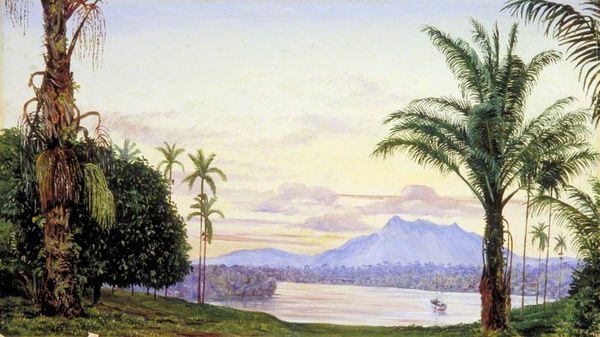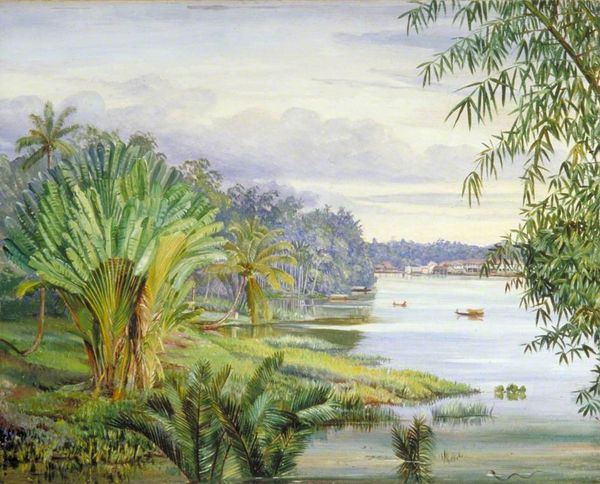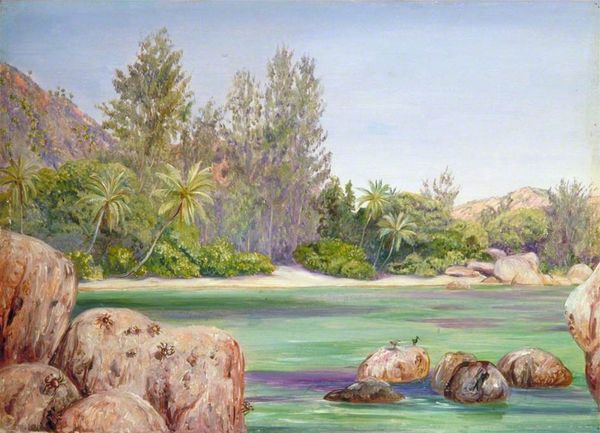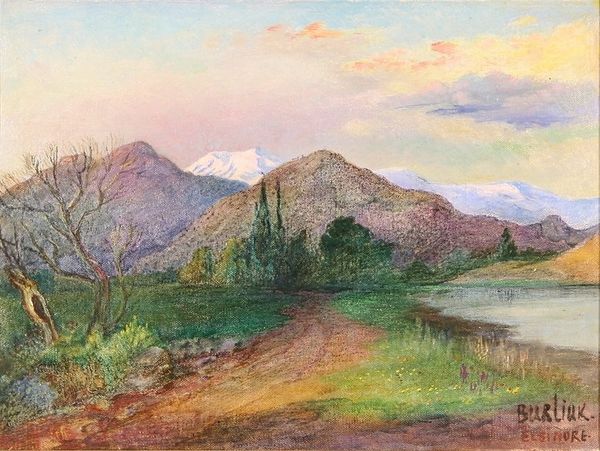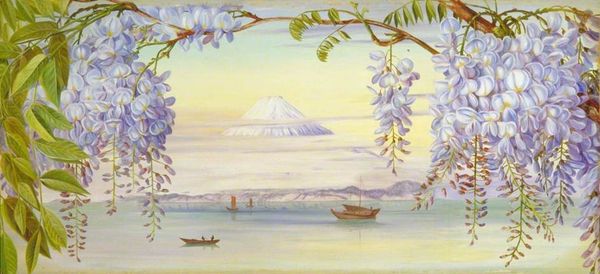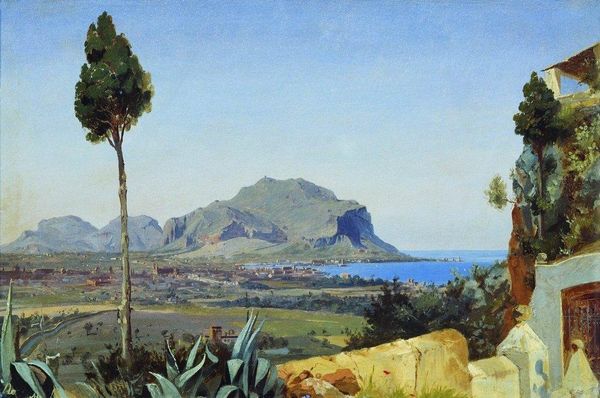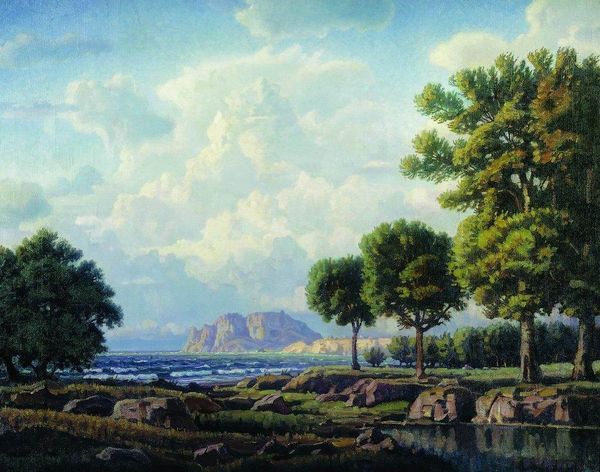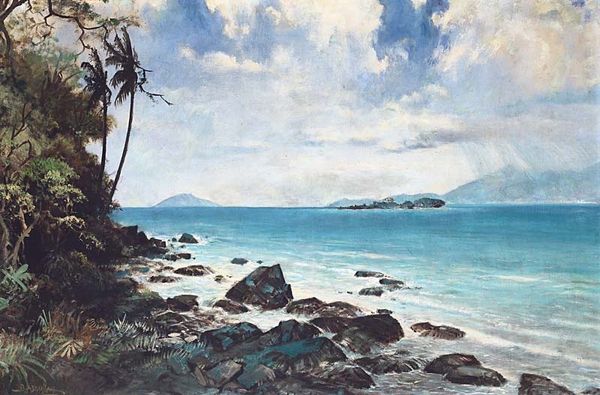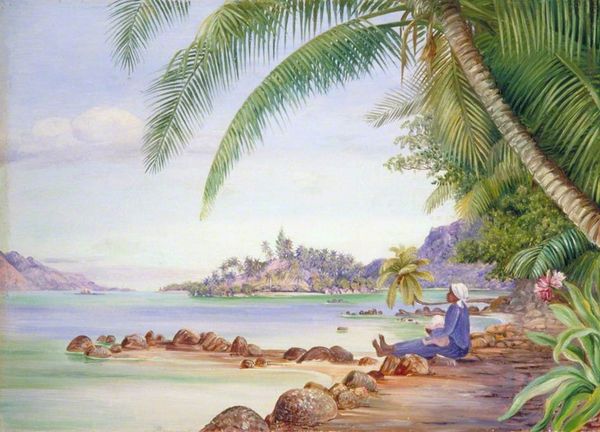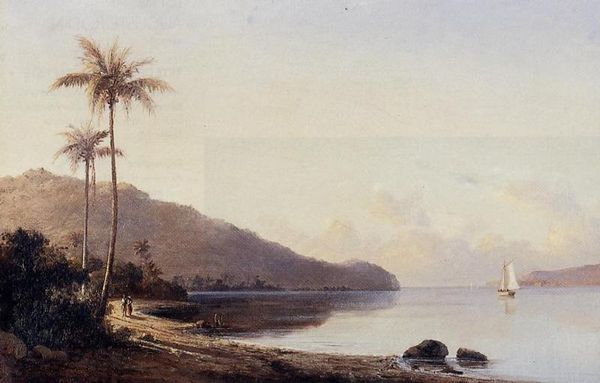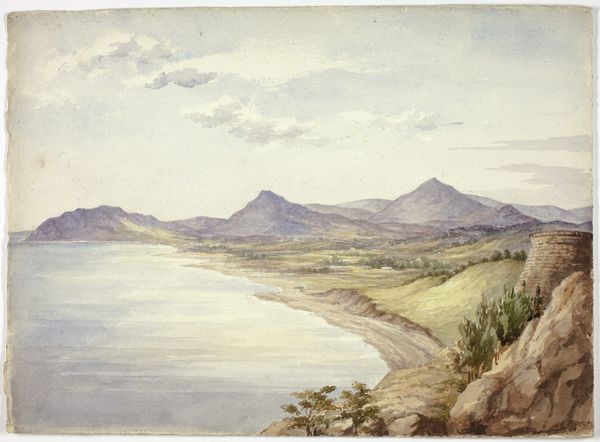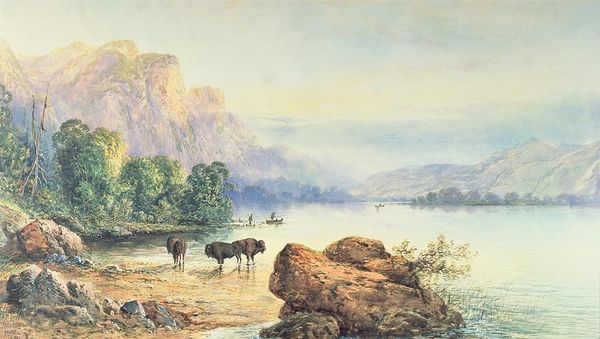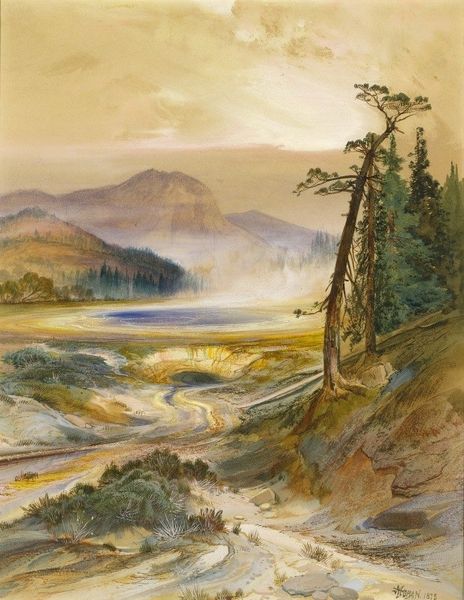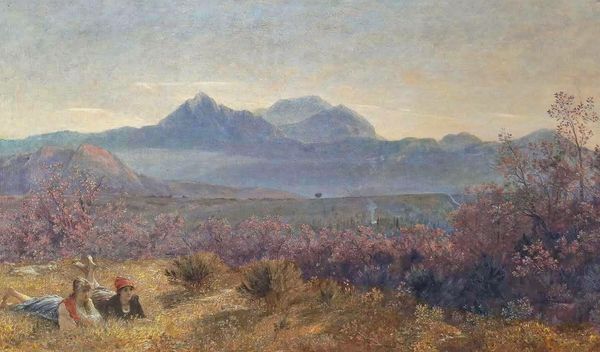
Copyright: Public domain
Editor: This is Marianne North’s watercolor, "View of Mount Earnshaw from the Island in Lake Wakatipe, New Zealand," painted around 1880. The way she captures the light on the water and mountains is beautiful, but also quite different from other landscapes I've seen. What strikes you most about it? Curator: What’s fascinating here is considering this work within the context of colonial botanical art. North was an independent woman, traveling the world, documenting flora. This wasn’t purely objective scientific illustration; it’s a highly mediated view. Notice the composition - the romantic framing of 'exotic' nature for a European audience. How do you think the political context of the British Empire might have influenced how this scene was represented and received? Editor: So, you’re saying the painting isn’t just a neutral record of what she saw? That makes sense, because even the viewpoint is selective. Curator: Exactly. These images often played a role in constructing an idea of empire and natural resources to be claimed. Think about where this piece was displayed – probably in a gallery in England, contributing to a larger narrative about the British Empire and its global reach. Editor: It's like the painting is also a political statement. That’s a completely different way of looking at a pretty landscape! Curator: Precisely! Analyzing art means looking beyond just what's depicted. It's also about considering its social function, the artist’s position, and how that image circulated in society. Editor: I definitely learned a lot about looking at art through a different lens – thinking about power dynamics and how they shaped artistic choices. Curator: And I was reminded how a seemingly simple landscape painting can contain complex cultural and political narratives, prompting further questions.
Comments
No comments
Be the first to comment and join the conversation on the ultimate creative platform.
